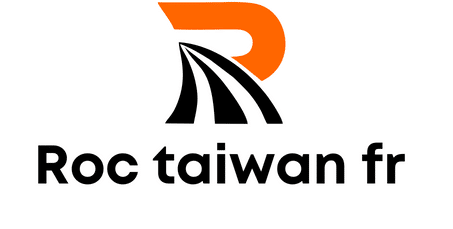How Can Wearable Sweat Analysis Technology Optimize Hydration for Marathon Runners?

In the world of endurance sports such as marathon running, data and analytics have transformed the way athletes train and compete. From heart-rate monitors that track cardiovascular performance to GPS devices that measure distance and speed, athletes now have a wealth of information at their fingertips. Recently, a new type of wearable technology has emerged that utilizes sensor technology to help athletes optimize hydration levels by monitoring sweat. This article delves into this innovative method, its applications, and how it can transform hydration strategies for marathon runners.
Understanding Sweat Sensors: The Basics
Before we delve into how sweat sensors work, it’s essential to understand the role of sweat within the human body. Sweating is the body’s natural method of thermoregulation, releasing heat to maintain an optimal body temperature. Inside each bead of sweat are vital electrolytes and other materials that can give a unique insight into a person’s hydration status.
A lire en complément : How do Virtual Team Challenges Sustain Motivation in Remote Athletes?
Sweat sensors are wearable devices embedded with electrodes that measure the changes in sweat composition. Essentially, these sensors collect sweat, convert the constituents into an electrical signal, and send the data to a connected device for interpretation. The sensor can collect information about electrolyte balance, fluid loss, and even blood glucose levels, providing a comprehensive insight into the runner’s hydration condition.
Applications of Sweat Sensors in Sports
Sweat sensors have found significant applications in sports, especially endurance events like marathons where hydration management is critical. With the data collected from sweat sensors, athletes can tailor their hydration strategies to ensure optimal performance and prevent conditions such as dehydration and hyponatremia.
A découvrir également : Can Smart Fabric Clothing Improve Recovery Times in Post-game Rugby Players?
For instance, if the sweat sensor detects a high concentration of sodium in the sweat, it might suggest that the athlete is losing significant electrolytes and needs to replenish. This feedback allows the runner to adjust their fluid and electrolyte intake in real-time, preventing the dreaded "bonk" that can occur when the body’s resources are depleted.
Moreover, monitoring sweat can also offer insights into an athlete’s fitness and acclimatization status. Regular sweat analysis can help identify changes over time, indicating their body’s adaptation to training or a particular environment.
The Science Behind Sweat Sensing Technology
The science behind sweat sensors rests on the principles of biochemistry and electrical engineering. The core of these devices consists of biosensors made from conductive materials, which can react with specific molecules in sweat, such as sodium, potassium, or glucose.
The interaction generates an electrical signal proportional to the concentration of these molecules. As the sweat washes over the sensor, the changes in electrical signal are recorded, providing information on sweat composition and rate.
Getting accurate measurements isn’t always straightforward, though. Factors such as sweat rate, sensor’s contact with the skin, and environmental conditions can potentially affect the data. However, continuous advancements in sensor technology are helping overcome these challenges and improve the accuracy of sweat analysis.
The Future of Wearable Sweat Sensors
The future of wearable sweat sensors looks promising. As sensor technology continues to evolve, so does the potential for more precise and personalized hydration strategies for athletes. Imagine a world where your smartwatch not only tracks your heart rate and miles run but also alerts you when it’s time to hydrate based on your sweat analysis. Or a world where your sports drink is customized to your unique sweat profile, providing the exact electrolytes you lose during a workout.
Already, several companies are developing next-generation sweat sensors that are smaller, more reliable, and can detect a broader range of biomarkers. Some are even exploring non-invasive methods to monitor hydration, such as analyzing sweat vapor instead of liquid sweat.
With continuous monitoring and real-time feedback, these sensors can transform hydration strategies from a one-size-fits-all approach to a highly personalized method, optimizing performance and safety for every athlete.
Sweat Sensors: A Paradigm Shift in Sports Hydration
Wearable sweat sensors mark a paradigm shift in sports hydration. By providing a real-time snapshot of an athlete’s hydration status, they empower athletes to make informed decisions about fluid and electrolyte intake, optimizing performance, and preventing dehydration.
With the proliferation of wearable technology and the increasing demand for personalized training methods, sweat analysis technology is likely to become a staple in the future of sports. For scholars and researchers, the field of sweat sensing offers vast opportunities for study and development, as understanding our body’s response to exercise and environment continues to be an area of immense interest.
While still in its nascent stages, sweat sensor technology is a promising development in the world of sports science. As more athletes and coaches begin to understand and utilize this technology, the future of endurance sports like marathon running is set to be more data-driven than ever.
Google Scholar and Sweat Sensor Research
Google Scholar, a renowned and accessible database of academic papers and scholarly articles, has seen a surge in publications relating to wearable sweat sensors in recent years. This surge indicates the growing interest and advances in the field of sweat analysis technology.
Research papers available on Google Scholar emphasize the importance of sweat sensors in maintaining the body’s hydration levels. They delve into the complex processes of converting sweat into readable data, which can provide insights into an athlete’s hydration status. Scholars are also investigating the potential of machine learning in processing and interpreting these data more effectively.
Moreover, Google Scholar hosts multiple studies on how different environmental factors, body mass, and sweat rate can impact the readings from sweat sensors. Researchers are working on ways to account for these variables to ensure accurate and consistent data.
As science progresses, the body of knowledge around sweat sensors will undoubtedly grow. The potential of this technology is immense, and the scientific world is eager to explore it in depth. Interested readers can open separate windows to delve into various research papers on Google Scholar and discover the fascinating world of wearable sweat sensor technology.
The Conclusion: The Next Step for Marathon Hydration Optimization
In conclusion, wearable sweat sensors represent a groundbreaking innovation in sports science, offering the potential to revolutionize hydration strategies for marathon runners. By providing real-time sweat composition data, these devices empower athletes to personalize their hydration plans, optimizing performance and safety.
The development and application of sweat sensors are still in the early stages, but the future looks promising. Advancements in sensor technology, machine learning, and understanding of the human body’s responses to varying conditions are paving the way for more accurate, reliable, and comprehensive sweat analysis.
As more athletes and sports professionals begin to understand and utilize this technology, the approach to hydration in endurance sports like marathon running is set to become more data-driven and personalized than ever before. This paradigm shift in sports hydration, although nascent, is gaining momentum and is well on its way to becoming a game-changer.
Research scholars and startups alike are working tirelessly to refine sweat sensor technology and expand its applications. As wearable sensors become more commonplace, athletes across the world will undoubtedly reap the benefits of this innovative approach to hydration management.
For now, the focus remains on raising awareness and understanding of this technology among both athletes and sports professionals. Sweat sensors have the potential to transform hydration strategies dramatically, but they need to be used correctly and responsibly. As the saying goes, ‘knowledge is power’, and in this case, it might just be the difference between a record-breaking marathon time and a severe case of dehydration.
